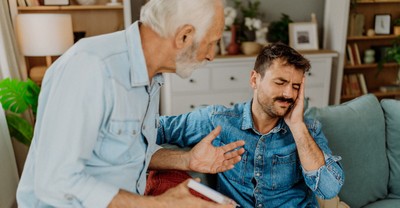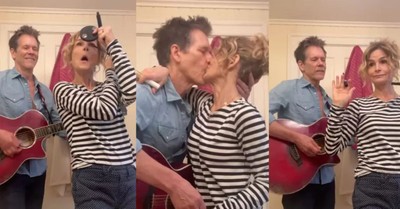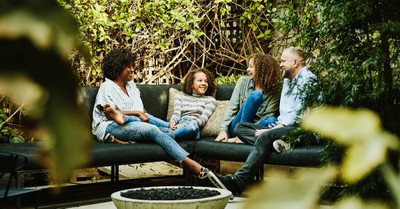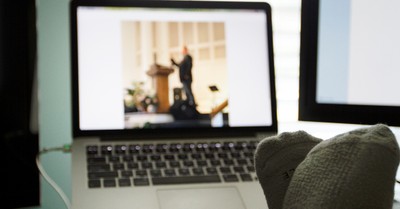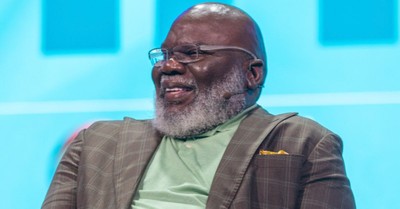A Positive Life
- Shane Stanford Author
- Updated May 02, 2010
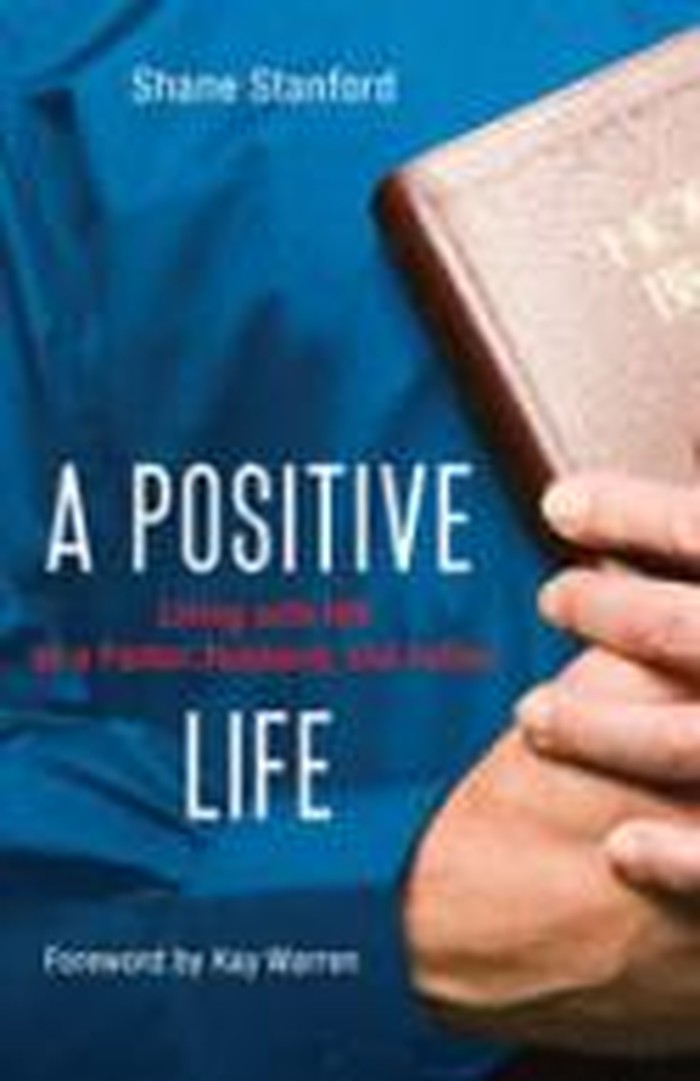
Editor's Note: The following is an excerpt from A Positive Life: Living with HIV as a Pastor, Husband and Father by Shane Stanford (Zondervan, 2010).
Chapter 1
The Day Before
Dear God, Ms. Gandy, my Sunday school teacher, said you said we could ask for anything and that you would listen. I mostly talk to you by praying, but this is important, so I thought I would write it down....
— First journal entry, January 19, 1979
Trauma changes us. I watched a woman on the news describe the year since she had survived a plane crash in Chicago. She said the event had profoundly changed the way she viewed her world; she spent more time with her family and tried to enjoy the "everydayness" of things. Her relationships, language, and worldview were framed in the context of before the accident and after it.
"You can't make sense of the whole of your life unless you understand the magnitude of how much changes when the world turns upside down," she said. "You may not remember all of the details or circumstances, but you most certainly know the timeline."
When we try to understand today, it matters what happened before.
Growing up a hemophiliac, I spent a great deal of time in the hospital. Thankfully, my diagnosis was mild by other comparisons, and I only needed medical attention when I was hurt or having a procedure. As most little boys do, I often did things that were either unwise or downright stupid. Although my parents kept me from playing most organized contact sports, I played a lot of backyard football, baseball, basketball, and soccer. Thus, I was always hurt from some shot or lick I took, and I found myself in the emergency room much more often than my mother liked.
The nurses and doctors at the local emergency room were more than just my caretakers when it came time for Factor VIII (the medicine used to treat the hemophilia); they were my family. Whenever I got hurt, they would stitch me up, give me a dose of Factor, and send me on my way. Because Factor was so expensive and had to be administered through an IV, local emergency rooms became the places for most hemophiliacs to receive their doses, especially the mild ones like me.
Though I was mild, I saw the nurses on a regular basis. I was always doing something that hemophiliacs (or most children) in general shouldn't do. Once I tried to ramp a parked car on my mountain bike. I made it —halfway. The other half was me rolling off the side of the car and hitting the ground. I also enjoyed building forts, that would, for one reason or another, lead to a nail stuck in my hand or a bruised knee from the rope swing. And I enjoyed sports of any kind. Though I tried to be as careful as possible, I wanted to be as normal as everyone else, which meant taking an elbow to the chin in basketball or a bruised rib in football or tearing ligaments in my ankle chasing a fly ball in baseball. Yes, the nurses saw me on a regular basis, and I took my fair share of scolding and lectures from them about how I should be careful and use "what little of my mind I apparently had" they would say. But I think deep down they liked seeing me. I was always hurt, of course, but I was just a normal boy.
It was during one of those visits that I met a new pediatrician named Dr. Ronnie Kent, an extremely upbeat man whose sense of humor and kindness made any patient feel better. I was in the ER from a water slide accident — rushing water plus concrete plus a three-hundred-pound man racing behind me. My forehead caught the brunt of the landing, and I received a "goose egg" the size of a fifty-cent piece, which immediately swelled and turned purple.
My stepfather arrived at the hospital just after I was taken for a CAT scan. He was told to go to the basement of the hospital to find me. Radiology and the morgue were located on the same floor. As the elevator opened, my stepfather saw the sign —Morgue —and thought I had died. He stood there, frozen, wondering how he would tell my mother.
Eventually someone directed him to the CAT scan lab around the corner. The doctors kept me at the hospital for a few days, and all the while my mother was on bed rest at home after delivering my sister, Whitney. It was a stressful time, but when Dr. Kent walked into the room, I immediately felt at ease. From the beginning, Ronnie and I had an instant rapport. He was a devout Christian who talked openly about his faith, and he spent a lot of time talking to me and my family. Given the complexities of my health, this meant a great deal to us. Dr. Kent became my friend as well as my doctor.
It was during the course of my all-too-regular childhood visits to Dr. Kent that he first mentioned AIDS. The nation was becoming aware of the disease that was affecting primarily gay men in large cities. There were concerns that the disease had found its way to the blood supply, particularly to the hemophiliac community through our medicines, all of which are made from human blood products. Dr. Kent reassured my parents he believed everything would be fine, but just in case, he recommended we try to avoid Factor as much as possible. He suggested using several alternatives, including older remedies for hemophilia not made of human blood, as well as hormone drugs that were known to raise clotting factors. Given the lack of any formal test for AIDS antibodies and the long-term development
of the disease once a person has seroconverted (become positive with the disease), many of us thought we had bypassed any real issue concerning infection or contamination. So, as with most issues not acutely impacting our lives, I mostly forgot about the implications. I was told to be careful. That was no small feat for an adolescent boy, but I tried.
Over the next couple of years, I was careful, surprisingly so. There were a few injuries here and there, but nothing that would require significant use of Factor. My health remained strong. The new medicines for raising clotting levels worked well, giving hope that my Factor intake would be minimal until a safe supply could be developed.
Life was as normal as any hemophiliac could enjoy. I heard stories of hemophiliacs whose lives were otherwise, hemophiliacs like young Ryan White who contracted AIDS and was kicked out of his school in Indiana. I rooted for him each step of the way, even as I was secretly relieved that I didn't have to go through what he endured — and grateful I had been spared infection.
There were other stories too. The saga of the Ray family in Florida was most disconcerting, because their house was burned after a series of death threats. All because they have a disease? I asked my mother. I could tell that she was horrified by the news of what others were doing to these families. We would pray for them, but again, we remained thankful that we had somehow missed the force of this storm.
Just prior to the seventh grade, I was diagnosed with keritikonis, a hereditary and degenerative malformation of the corneas. Whereas most people's corneas are round, mine were pointed and caused significant vision problems. Over time, corrective lenses were of no use and the only alternative was a corneal transplant. Without it, my vision would deteriorate until I was legally blind.
Until then, no one in Mississippi had performed a corneal transplant on a hemophiliac. Although corneal surgeries do not experience a lot of bleeding and healing happens at a faster rate than in most other areas of the body, there was a laundry list of concerns for transplants on a hemophiliac. Several doctors refused to take the case. The one who finally agreed was a brilliant, fearless physician in Jackson, Mississippi. Her reputation was impeccable, and she had a penchant for taking difficult cases. She performed my surgery on Halloween 1986. The procedure went well, and almost immediately I regained some sight in my eye. I awoke from surgery thrilled to be seeing again and thankful that complications from the hemophilia were minimal.
However, two months later, I returned because of problems with stitches. The surgery had to be repeated. This was a setback, especially to my spirits. The vision in my other eye had deteriorated by this time, so I was literally blind in one eye and couldn't see out of the other. It was a difficult time emotionally. The prior spring I had finished second in the state high school golf championships, and there was talk of college golf scholarships. Now, months later, I could scarcely navigate my daily routines, much less hit a golf ball.
Even then I saw glimpses of God at work in my life. My hematologist was Indian and even smaller and feistier than my eye surgeon. She was very direct. Concerned that I was spending too much time moping in my hospital room, she insisted that I take a stroll around the ward. Despite my protests, I was sternly booted out of bed by this four-feet-eleven-inch drill sergeant in a doctor's coat.
On one of my forced strolls, I met Kathryn. Through an open door, I saw her sitting on the edge of her bed. Kathryn's eyes radiated an unbelievable blue, but they were no match for her smile. She spoke with crisp words punctuated by a dry, subtle laugh that made me laugh with her. The pediatric ward at the university hospital was filled with sad cases and mostly younger children. The circular building was old, and there were few modern conveniences other than a television in each room. Add to this the fact that I couldn't see very well and that I had few visitors (the hospital was eighty miles from my hometown), and I was craving interaction with anyone remotely my age and with any sense of conversation ability. Kathryn was a welcome sight, for she could talk on any number of topics, from politics and religion (my favorites) to Southeastern conference football. We were both sixteen, and I was intrigued and intimidated by this self-confident young woman. She was the kind of girl I either wanted to marry or elect president. Or both.
After Kathryn's eyes and her smile, the next thing I noticed was the bandage around her head. Kathryn suffered from an inoperable brain tumor. While other sixteen-year-old girls were worrying about what clothes to wear or who to date, Kathryn spent her days dealing with treatments, though I was never fully aware of exactly what, and resting. All I knew was that she spent most of her mornings down in the radiology department and would come back exhausted. She rested most of the afternoons and by early evening felt well enough to talk. The routine of treatments, meds, and doctor visits were visibly taxing and difficult. And often Kathryn felt sick from the side effects. Yet her perspective on life was wide and generous. From the moment I met her, I was amazed by her ability to look beyond the difficulties of her illness and maintain hope.
Although the doctors assured Kathryn's family there was nothing they could do to save her life, she continued to fight the odds. She was a nurses' favorite, partly because of her attitude but also because, along with yours truly, she was the oldest child on the floor.
In addition to hope, faith was one of Kathryn's most noticeable attributes. She spoke of God in such personal terms that even the most ardent atheist would feel a connection to God or at least want to know more. Kathryn's faith wasn't a crutch, but a part of life as necessary as breath. My self-pity quickly gave way to awe as this fellow sojourner prayed for, encouraged, and consoled me. Her unshakable optimism never failed to stun me. I remember then, as now, wanting to achieve that kind of hope and faith in my own life. Once when I stopped at Kathryn's room, I found her reading Mere Christianity by C. S. Lewis. She read me the section about humanity not being able to identify a crooked line unless we could conceive of a straight line. When she finished, she proceeded to talk about evil and good and about how so many of the things we see in this world naturally fit into one category or the other. Years later, as a pastor, I wouldn't think such a discussion so dramatic, but for two sixteen-year-old kids, it was remarkable. Kathryn loaned me her book, and it sits on my bookshelf to this day.
Why would a sixteen-year-old girl be reading the theological works of C. S. Lewis or, as I would later discover, Bonhoeffer or Augustine? Part of it was that Kathryn was just that bright and inquisitive. But part of it was because of what the world had thrown at her. She was not on an ordinary journey, and the issues she faced couldn't be neatly packaged into rights and wrongs, goods and bads. Kathryn, more than anyone, understood that most of life's conversations take place in the middle, in the gray, in the nuance. I would appreciate this much more months later when I received my diagnosis, knowing from the years and miles since that life is much more than the sum of the words we can say.
Near the end of my hospital stay, the cries from Kathryn's room reached a frightening pitch as her seizures worsened. Her pain must have been unbelievable. However, by the next day, Kathryn, although weakened, displayed the same grace and peace as before. It is still hard to describe the courage and valor she showed. I would arrive at her room to find her sitting in bed with the same smile as so many days before. Sometimes her voice was weaker or her face more drawn from the strain and weariness, but never her spirit and never her sense of faith and presence. She would always invite me in, and we would spend the next few hours talking.
Our last conversation took place shortly after a church youth group visited our hospital ward. Expecting to find only small children, the group members, many of them our own age, dressed in Halloween costumes to hand out candy and other treats to sick children. Kathryn and I caused quite a stir as the visiting youth barged through our doors, only to find two of their peers sitting, somewhat overgrown, in our beds. The looks on their faces ranged between shock and the look you see when a performer knows the show has gone awry but barrels through anyway. These kids had been sent to minister to the "children" of the pediatric ward, never expecting to find their peers. But I remember every one of them regaining their composure long enough to try to cheer us up. Kathryn commented on the hilarious looks on their faces but also the obvious kindness in their hearts. At that point, I realized that I had never seen any young person other than me and these kids in Kathryn's room. Over the course of my stay, my best friends had visited, but I had not seen anyone for Kathryn. I asked her father about this later (a
bold act for me at that age), and he said that Kathryn had been sick for so long that many of her friends had gotten back into the routines of their own lives, and that apart from a few kids in her youth group, most of Kathryn's real acquaintances were adults, until, of course, I showed up.
The day I left the hospital, I made one last visit to Kathryn's room. I told her I would take good care of her C. S. Lewis book and that we needed to stay in touch. She said I would soon get back into my routine and forget all about her. "But that is what should happen," she said. "Life goes on like that." Of course, I protested, and I really meant it. I wanted to stay in touch. Kathryn impacted my life, not just in those days, but I would learn later how much.
I arrived home to friends and neighbors checking on me and to the rush of the holiday season. I sent a couple of letters to Kathryn over the Thanksgiving holiday but did not get a return. I even tried calling the number she had given me but was told by who I believe was an aunt that Kathryn had gone on vacation with her family. "Was she doing well?" I asked the woman. "As well as could be expected," she replied. I didn't ask what she meant. I wish I had, because when I returned to the hospital two months later for another eye surgery, no one could tell me about her. I had not heard about Kathryn. It was as though she had vanished.
The whole situation was so strange. For someone whose story had changed my perspective during that difficult time to simply fall out of my life seemed so odd. Her example and life had been what impacted me most. How could someone with such trials and difficulties as hers possess such a beautiful perspective on the world? I couldn't answer those questions at that point in my life, but I believe God sent Kathryn to help me start not only asking them but also pondering their impact. Life is about questions, these kind and so many others. Kathryn helped me see that even with so much going wrong, we are given the choice of perspective, a sentiment my grandfather would echo months later. Kathryn was my angel, sent from God to prick my soul to start wrestling, even though I had no idea what with or when it would all matter.
But the questions and example that Kathryn was modeling for me and introducing me to were in response to other scenarios happening in my life that I did not know about at the time. And looking back, it is these two life-changing segments of events and relationships — one with a brave, sixteen-year-old girl and the other with doctors and blood tests —that show me how far out in front of us God goes. Nothing comes as a surprise to God. Nothing.
While I was visiting with Kathryn and entranced by her example and life, the daily routines of doctor visits, tests, and rehab provided more than enough for me to worry about. Rest was pretty much elusive in the hospital. There were always doctors in the room asking questions, poking, and prodding, and I endured blood test after blood test —the process became almost routine. As a hemophiliac, I was having my factor levels tested often —white blood counts to test for infections and red blood counts to make sure my iron and platelet levels remained constant. So, with such a variety of blood tests being done, I never would have questioned another test. Doctors reported regularly and were open and honest with us. Factor reports came back at 10:00 a.m. and 4:00 p.m. Later in the evening, the hematologist would check on me, as would the ophthalmologist. These tests and interruptions were all part of my routine. One day, late in the afternoon, my hematologist stopped by my room and asked my mom, stepfather, and father to step out into the hall. This was unusual; my mom didn't usually hold anything back from me. I was concerned but not particularly worried. My family had built relationships with all of my doctors, and they conversed regularly.
However, when Mom reentered the room, I could tell she had been crying. I asked her what was wrong. My mother hates for people to know she has been crying, usually going to great lengths to pretend that everything is okay. That time, however, she just looked at me without trying to hide what was more than obvious on her face.
"It's just that your blood-clotting levels are lower than I'd like to see them, and we want you to get better," she said. I knew my family was tired too. They had been with me over the past months throughout all of the surgeries and procedures.
"I will, Mom," I promised her. "It is all going to be okay."
She smiled. She knew that I could no more promise that than I could promise that I would have no more accidents. It just didn't happen that way.
Deep down I knew something else was wrong, but I dismissed it as Mom being tired and overly worried. It wasn't until ten months later that I would discover the truth: I had just tested positive for HIV. Of course, I had no idea that it could be something like this. I had always trusted the adults in my life to tell me the truth. From the time I was a little boy, I needed to trust people. It was part of my DNA, but it was also practical. Much of life was spent with someone sticking a needle in me, and remaining still and allowing people to do their work was necessary. I had fought back a couple of times as a child, and the medical personnel had put restraints on me. It was only after I promised not to fight and allow them to get their job done that I learned how, through clenched teeth, to endure the pain and not ask too many questions. I came to the conclusion that if there was anything I needed to know, they would tell me.
At some point, this idea took root in my psyche, and I trusted the adults in my life implicitly. Sure, not being told something as serious as that I was HIV positive is staggering, and knowing that I went nearly a year before someone finally shared the real drama in my life with me is hard. But what would any of us have done? What else could anyone expect of my parents, considering the impact of that news on them — knowing that no treatment was available, knowing that many people would not understand or may even get violent because of it, and knowing that, with my diseased eyes, I was already under a lot of strain? Sure, there is a part of me that wishes they would have trusted me as much as I trusted them. But as the years have passed, I have learned to read the rest of the story and see the other side too. Life is hard and does not always come at us with perfect intentions or plans laid out. We take what we find and deal with it.
I learned later that my mom cried nearly every day after the diagnosis. Having children myself now, I can't imagine how I would have felt. She almost told me several times over the course of months, but it never seemed to be the right time. Finally, life found its patterns again, and with me doing better each day and showing no signs of any disease, the urgency wore off.
And even with so much filling our lives during that time, once I was dismissed from the hospital, my life returned to my kind of normal. My eyes slowly mended and my sight improved. I was relearning how to function in the world and finding a measure of healing. Helping the process was a girl named Pokey. We had known each other for years, but Pokey and I ran in different circles. Then one day, on a trip to a school convention, she literally landed in my lap. With no seats left in the fifteen-passenger van, Pokey, notorious for running late, arrived just before the doors closed. Teachers were barking at her to find a seat, and so she did — in my lap. There she rode for two hours; no teacher protested, and I wasn't about to either! Within two months, I summoned the courage to ask her to the prom, and the rest, as they say, is history.
I'm not exactly a neutral observer, but my wife is nothing short of striking — when she enters a room, people sit up and take notice. But when Pokey and I started dating, I was legally blind in one eye and wore a patch on the other. I first fell in love with Pokey for other qualities, but I was certainly pleased by what my gradually improving eyesight revealed! I was the nerd who spent most of his time studying in the library or working for the "class cause," while Pokey was the cutie who became famous for her ardent love of life and for her slightly mischievous side. On the surface, no two people could have appeared more different.
Pokey was fun and full of life, a stark contrast to my reserved, quiet demeanor. She helped me enjoy life and not take myself so seriously. I, in her words, "grounded her" and made her think about her goals and dreams. We were good for one another. I wasn't looking for a girlfriend any more than she was looking for a boyfriend. We had both been through major heartbreaks the year before and decided that dating was not all it was cracked up to be. Besides, what brought us into each other's life were not the usual romantic notions. I liked the way she laughed and giggled. She liked the way my brow furrowed when I was thinking about something serious. We could sit and either talk or be quiet. It may sound strange, but at sixteen neither of us wanted much more than a genuine friend.
And yet there was something special about Pokey that touched deep into my soul. It is hard to explain the broken edges of life with someone who has never experienced them. Pokey didn't need any explanations. I could tell that she had seen her share of heartbreak. Even at such a young age, we shared a mutual understanding of certain wounded and broken places in our lives. In each other we found a willing friend and an understanding spirit. Pokey and I became inseparable, a couple who were also each other's best friend and biggest fan. Moreover, Pokey supported my search for God's place in my life. We didn't
understand it then, but God was building a framework for how he would work through both of us later.
During my eye surgery, my relationship with God had run the gamut from deep resentment and anger to acceptance and love. I spent a lot of time talking to God about my condition. My mother and family were and are very devout in their faith, and I had learned from many previous injuries and tough times to trust that God can teach us through our life circumstances. This period was one of the most important times in my life spiritually. I shared my testimony in a Sunday school class and then, later, at a youth event. Before long, my pastor —and Pokey —persuaded me to preach at our annual youth service.
On May 16, 1987, with a patch on my left eye, I preached my first sermon. It was from Philippians 4:4 - 7, in which Paul writes, "Do not worry about anything, but in everything by prayer and supplication with thanksgiving let your requests be made known to God. And the peace of God, which surpasses all understanding, will guard your hearts and your minds in Christ Jesus" (vv. 6 -7).
I had learned this passage was more than words. As a hemophiliac, I knew what it was like to be in great pain and to spend hours lying in bed in agony over an injury that would take much longer than normal to heal. These moments had been my chance to place my pain in God's hands, and I had talked about that many times. Many people don't realize that hemophiliacs experience excruciating pain during an illness; they associate hemophilia with a cut or bleeding on the outside. But the vast majority of a hemophiliac's problems are because of internal injuries. A hemophiliac's joints and muscles bleed out quickly, and the struggle is not just about stopping the bleeding but also about recovering the site and healing the tissue so that it can be usable or strong again. That is why if an injury to, say, a hemophiliac's ankle is not properly healed and rehabbed, the tissue will remain damaged forever and that person will always have problems using that ankle effectively. Injuries, especially to joints and muscles, are very painful, and there is very little that can be done for them. Most physicians give Factor, but it takes time for the bleeding to stop and then for the injury to heal. There is a lot of discomfort, not to mention a lot of still moments, also excruciating to a child hemophiliac. While I was laid up, I couldn't do much but read and watch movies, which is where my love for books and movies came from.
But more than anything, growing up in pain taught me a lot about how much of this world we can't control. A lot of what we face, we have to barrel through or the pain will get the best of us. The latter is simply not an option. Probably one of my most difficult injuries was a back injury when I was just eight. I was swinging on the monkey bars and lost my grip. I not only landed on my back but on a small stick coming up from the ground. The bleed to my back muscles was severe, and the pain was excruciating. For nearly three weeks, during which time my mom would take me every twelve hours for Factor treatments, I laid on the hardwood floor of my house because it was the only place I could find relief. The doctors never gave me pain medicines, and I've never known why. I just spent my time hurting. I remember once that the muscle was so filled with blood from the hemorrhage that I was in agony and wept and begged my mom to make it stop. "Please, please do something, Mommy," I cried. But there was nothing she could do. We simply had to allow time to pass and healing to occur. I do remember, however, my mother lying down on that floor with me every night and sleeping there for those three weeks. She couldn't make the pain go away, but she wouldn't abandon me either.
Through all of those different injuries, I also learned that the body, the spirit, and the soul don't differ much in how they respond to difficulties. Healing does not come at once; we have to be patient and wait. God's healing passes understanding; it gets down on the floor with us and wipes away our tears and holds us, especially when the aches and pains of life seem too much to bear.

Excerpt used with permission.
Publication date: April 26, 2010




